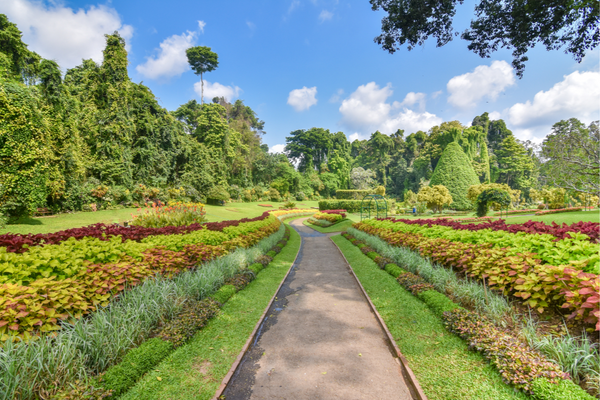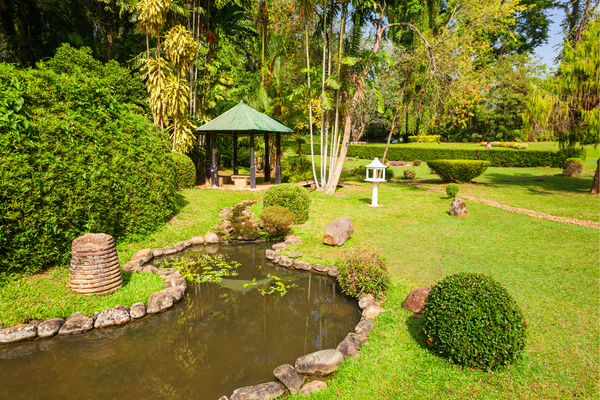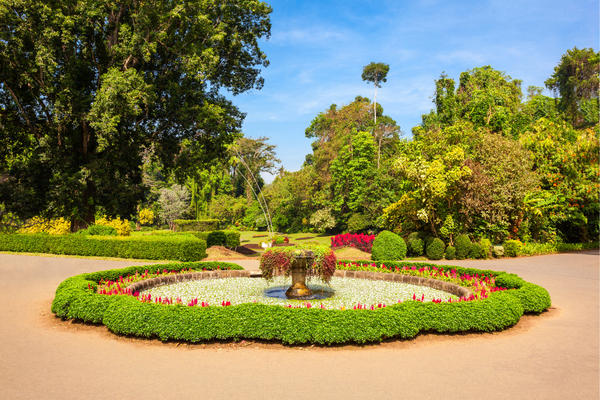peradeniya botanical garden – By Malsha – eLanka

Peradeniya Botanical Garden is a beautiful botanical garden located in the central hills of Sri Lanka, near the city of Kandy. It is one of the oldest and most renowned botanical gardens in Sri Lanka, covering an area of 147 acres.
The garden was established in 1821 during the British colonial period and was initially used for coffee and cinnamon cultivation. Later on, it was transformed into a botanical garden in 1843 under the direction of Alexander Moon. Today, the garden is home to over 4,000 species of plants, including many endemic and rare species.
Some of the highlights of Peradeniya Botanical Garden include the giant Javan fig tree, which is over 130 years old, the orchid house which displays over 300 varieties of orchids, the spice garden which showcases a wide range of spices, and the palm avenue which is lined with over 200 species of palm trees.
In addition to the beautiful plant life, Peradeniya Botanical Garden is also home to a variety of animals and birds, including monkeys, fruit bats, and a large number of different bird species.
Overall, Peradeniya Botanical Garden is a must-visit destination for nature lovers and anyone interested in exploring the natural beauty of Sri Lanka.
Peradeniya Botanical Garden has a rich history that dates back to the early 19th century. The garden was established in 1821 as a coffee and cinnamon plantation during the British colonial period. However, in 1824, it was transformed into a botanical garden under the supervision of the British botanist Dr. William Kerr.
In 1843, the garden was moved to its current location in Peradeniya, near Kandy, and was expanded to cover an area of 147 acres. The development of the garden was overseen by several eminent botanists, including George Gardner, William Thwaites, and Joseph Dalton Hooker.
Under their guidance, the garden’s collection of plants grew rapidly, with a focus on collecting specimens from Sri Lanka and other parts of the world. The garden became an important center for research and education, with its plant collections serving as a valuable resource for botanists and researchers.
During World War II, the garden was used as a research center for studying rubber cultivation, and after Sri Lanka gained independence in 1948, the garden was turned over to the Department of Agriculture and became the Royal Botanic Gardens, Peradeniya.

Today, Peradeniya Botanical Garden is a popular tourist destination and remains an important center for plant research and education. It is home to a wide variety of plants and trees, many of which are rare or endemic to Sri Lanka, and is also a sanctuary for a range of animal and bird species.
Peradeniya Botanical Garden is located in the central hills of Sri Lanka, near the city of Kandy. The garden is situated about 5.5 kilometers from Kandy city center and covers an area of 147 acres.
The garden is located in a valley, surrounded by hills, and is situated at an elevation of about 460 meters above sea level. The area around the garden is characterized by lush vegetation and a tropical climate, with warm temperatures and high humidity.
The garden is situated on the banks of the Mahaweli River, which is the longest river in Sri Lanka. The river flows through the garden, and several small streams and ponds are also located within the garden.
The topography of the garden is diverse, with rolling hills, flat areas, and valleys. The terrain is well suited for growing a wide variety of plants, and the garden is home to an extensive collection of plant species from Sri Lanka and other parts of the world.
Overall, the geography of Peradeniya Botanical Garden is one of the factors that make it such a beautiful and unique destination. The garden’s location in a lush valley, surrounded by hills, and its proximity to the Mahaweli River all contribute to its charm and appeal.








